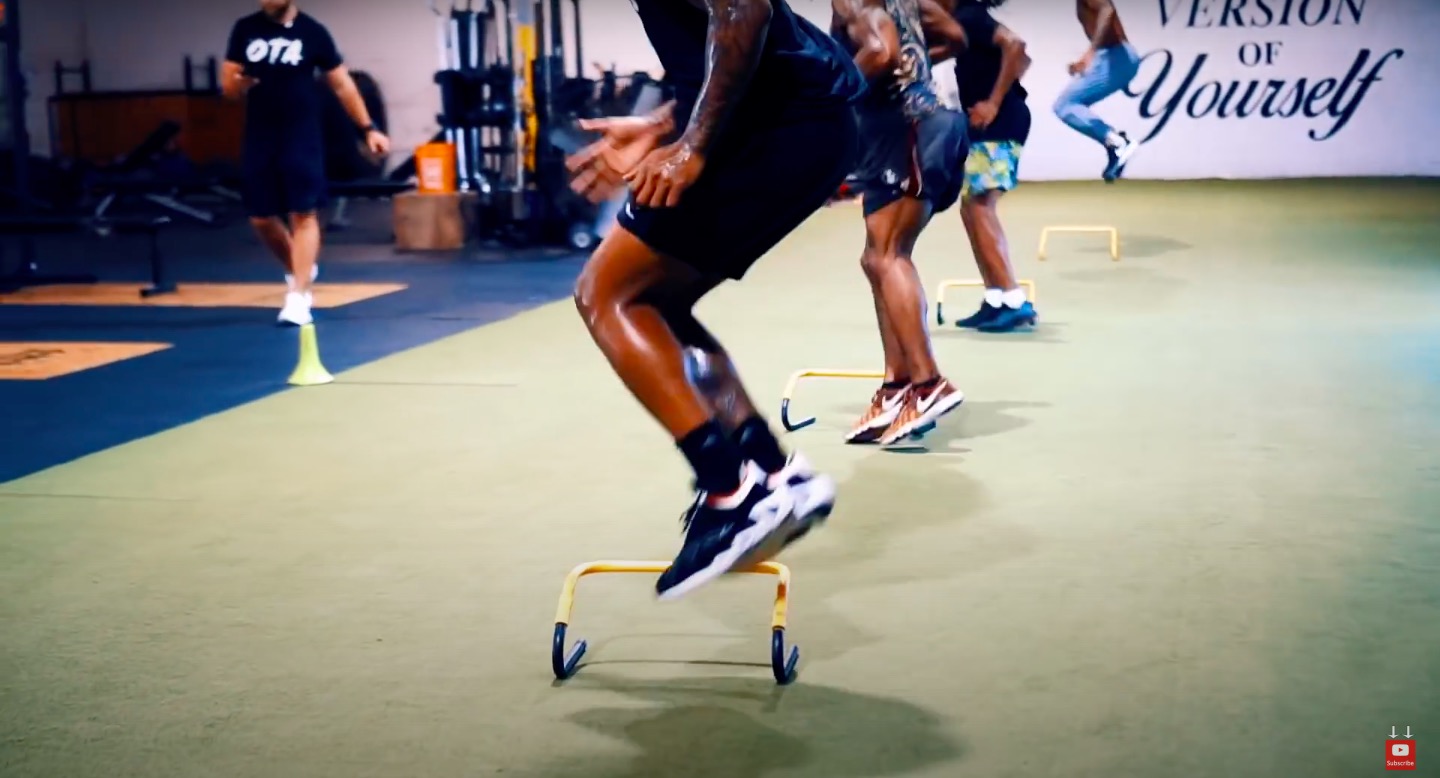If you’re looking to increase agility, COD speed, quickness, and power – it’s an important skill to transition training drills, into actual game-time agility on the field/court, or whatever your sport is. Today I’m sharing two important factors I like to use with my athletes when gearing up for competition towards the end of the off-season for elite game speed.
Pre-Determined Movement
The first is a tip is I’ve shared before, and it’s important enough to go over again.
Isolated, pre-determined movements are important when first starting agility training for the first time, or within your current training cycle. By memorizing the movement prior to doing it, you know exactly when the change of direction takes place where it be a line or cone, etc. Knowing your rhythm and timing means you can move through the entire drill at full speed.
It’s key to isolate all the change of direction you do during your actual sport, training them in a gym setting so they feel more natural at game-time. Once you’re confident, you can progress the same drills, but now with a “reaction” component. Add a stimulus to the drill which could be either auditory or visual. Now the athlete must react and change direction ON CUE, which is much closer to how you actually respond in a game.
Reactionary Movement to Increase Agility
The next factor is something I wanted to address, which most athlete’s aren’t actually training: variable knee height.
While you’re changing directions in a drill like the lateral shuffle or another multi-directional movement, there’s a few things you want to accomplish. First, you should just move through the actual drill to get your form right and then you can add in a variable such as knee height. By lifting the knee and moving from a frontal to a lateral plane of motion, you’re forced to become comfortable with moving in space from one variation to another depending on how you’re moving.
This is where I might begin adding hurdles into an athlete’s training to increase agility so they can continue performing the same drill, but with a focus on lifting the knees higher and moving smoothly. Now we can move from training only pre-determined movement to reactionary, going from a lower knee height, to higher on the hurdles. Finally we pair reactionary movement with a high-knee through multi-directional movement, which teaches you to cruise with ease on the field or court.
INCREASE AGILITY WITH GAME SPEED

I’ve just laid out the full guide to agility training for athletes.
If you want to see it in practice, I invite you to check out GAME SPEED, my new agility training system.

It uses all the methods I laid out above and gives you the tools to customize the agility training for your sport.
If you decide to take your agility training to the next level with GAME SPEED, you’ll receive two exclusive blog-reader bonuses.
But, only if you sign up at the link below.